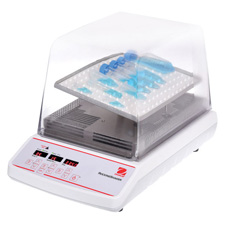



Find all of your laboratory and workplace safety supplies at Safety Emporium!
 Alopecia |
 Glossary Index |
 Amine |
| MSDS Topics |
Free Sites | FAQ's | Regulations | Glossary | Software | Suppliers |
| Books | Forum | Poll | Fun stuff | Quiz | Store | |
| Understand your MSDS with the MS-Demystifier | Search ALL our MSDS info | |||||
The Ames Test is a way of determining whether a material causes genetic mutations (changes). Animal liver cell extracts are combined with a special form of salmonella bacteria. The mixture is then exposed to the test substance and examined for signs that the bacteria have mutated (a process called mutagenesis).
The Ames test does not directly indicate the carcinogenic (cancer-causing) potential of the substance, however there is a good correlation between mutagen strength and carcinogen strength in rodent studies; approximately 75% of chemicals that have a positive Ames test are found to be rodent carcinogens. However, not all carcinogens will give a positive Ames test.
Despite these limitations and even though rodent test results do not always extrapolate well to humans, given the relative low cost and low test time (days to weeks) compared to traditional animal studies that involve live subjects, the Ames test is an exceedingly useful screening tool for potential mutagens.
If this term appears on a Safety Data Sheet, it will usually be in Section 11 (toxicological information) with respect to carcinogenicity.
Any substance that can mutate the cells of your body is generally a Bad Thing. Avoid the use of mutagens if at all possible. If you must work with them, be sure to utilize the proper personal protective equipment (PPE) recommended on the SDS and use appropriate administrative and engineering controls to protect the other occupants of your workplace.

Safety Emporium has all kinds of lab equipment such as this incubating rocking shakers and more.
See also: carcinogen, mus (mouse), mutagen.
Additional Definitions from Google and Onelook.
Entry last updated: Sunday, February 20, 2022. This page is copyright 2000-2025 by ILPI. Unauthorized duplication or posting on other web sites is expressly prohibited. Send suggestions, comments, and new entry desires (include the URL if applicable) to us by email.
Disclaimer: The information contained herein is believed to be true and accurate, however ILPI makes no guarantees concerning the veracity of any statement. Use of any information on this page is at the reader's own risk. ILPI strongly encourages the reader to consult the appropriate local, state and federal agencies concerning the matters discussed herein.